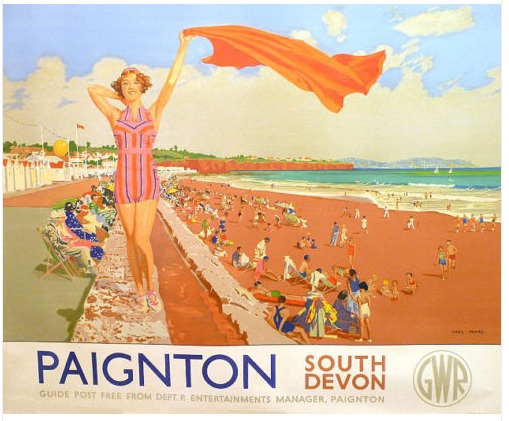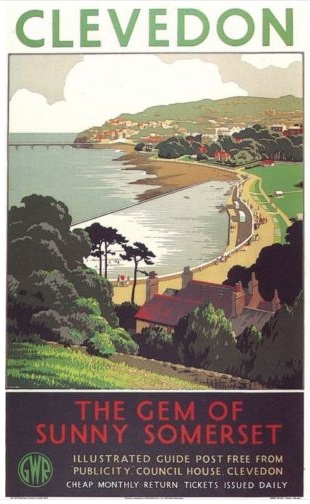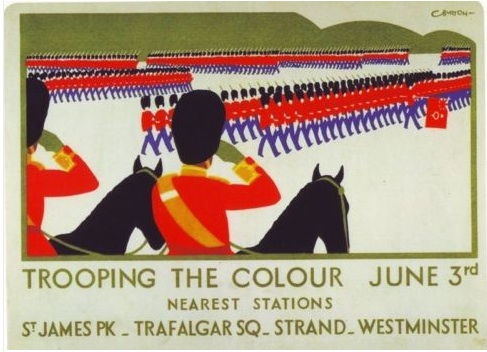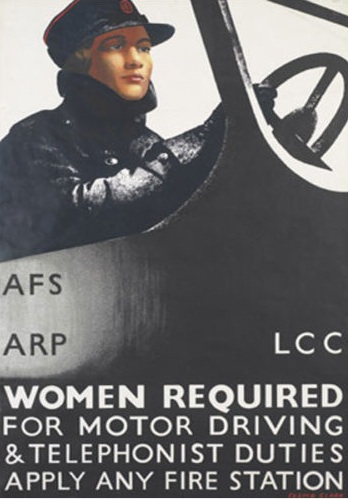We’re all about questions today on Quad Royal. Or rather, one question in particular: just how much of what is sold in the poster department of eBay is in fact legal?
The reason I’m asking is that, I was playing with the eBay app on the iPad, and so stumbled back into their bottomless pit of poster reproductions. Normally there’s a whole set of clever filters and searches (operated and maintained by Mr Crownfolio) which means that I don’t even notice that these items exist. But on the iPad, none of this is set up, and so an idle search for ‘vintage poster’ reminded me of the sheer volume of prints, giclee prints and A3 photocopies that are out there should you want them.
They range from reasonable quality,
to ones where even the seller isn’t convinced about the reproduction.
These posters are meant to be affordable reproductions of vintage posters that are rare and hard to acquire elsewhere. There are more expensive and higher quality prints out there. Our posters look great on the wall but may not stand up to a thorough examination. I fully admit the small print may be blurred and slight pixelation may occur on certain prints. These are fun items, not works of art.
Despite that write-up, he is still selling them. By the hundreds every month, judging from his feedback.
But I’m not asking philosophical questions about the relative values of reproductions versus originals this time. I’m just wondering how legal these are?
The basics of copyright are quite simple, that if an artist died after 1945, their work is protected for 70 years after their death. Which means that if a seller is selling a print of a 1950s railway poster (for £4.99, printed on a photocopier or bubblejet printer), there is a reasonable chance that they are infringing copyright somewhere along the way. The example above, incidentally, is by Jack Merriott, who died in 1968).
But what happens after that? Do you need to be the legal owner of a piece to have the right to reproduce it? Let’s take this 1923 poster by Grainger Johnson as an example.
No one seems to know much about him and his biography, so we will be generous and assume it is out of copyright. Does that then make it fair game for the eBay copyists? Or do they need to own a copy of the poster in order to have the right to reproduce it? I don’t know, and I would like to.
The next question is whether the nature of a commercial contract changes copyright too? (This link seems to suggest it does). So if a poster is commissioned by Shell, or London Transport or British Railways, do they still own the rights over the image? And for how long – for the same 70 years as the artist or until the company ceases to exist?
In other words, can these reproduce this 1930 Charles Burton as much as they like on their bubblejet printer, or should London Transport be consulting a lawyer?
Finally, is this also true of Crown Copyright, in particular where this applies to the huge number of World War Two posters which are being reproduced?
Questions, questions. But can anyone out there help me answer them?






Sal Shuel has written a simple guide to copyright for photographers, which may answer some of your questions.
Whoops, looks like the link didn’t make into the previous comment.
http://www.salshuel.co.uk
Thanks for that – they’ve also provided some links to some handy summaries as well.
So I can now tell you that Crown Copyright only lasts for 50 years after a work was published, so the WW2 posters are out of copyright. But I still don’t know whether, if a work is commissioned, the length of copyright is still 70 years after the artist’s death or not. I suspect it may be, but can’t prove it.
I have now just ordered ‘Copyright for Archivists’ from the library. If you’re really unlucky, I will report back.
I was about to suggest copyright for archivists, Tim Padfield is a copyright genius who knows everything but in the meantime this guidance from the National Archives is helpful http://www.nationalarchives.gov.uk/legal/pdf/copyright_full.pdf
I have just gone through all this for my “Modern British Posters” book.
In many instances, the claim to copyright is not clear. Many companies are no longer extant and many artists are unrepresented. The railway posters are, for example and in principle, copyright the National Museum of Science and Industry. Their images are looked after by the Science and Society Picture Library.
The permissions are relatively inexpensive, the image files are very much more expensive.
My experience of copyright is that no one really knows with the old stuff. It comes down to brinkmanship and negotiation. Some of the most difficult people to deal with are the ones who have no real claim to anything.
It is very difficult for an artist, or their estate, to claim that they retain any ownership of work that was done commercially. That’s usually handed over to the client with the work.
Hardly anyone is able to substantiate a claim to copyright through documentation.
In these circs, any legal dispute will only be resolved by negotiation.
I would say that 99pc of what is being reproduced for sale on ebay is, strictly speaking, illegal. But, who is going to prosecute and where is the enforcement?
My advice would be steer well clear of any images that relate to artists or organisations that employ a legal department. They lawyers exist to send letters and make demands. And they will.
I have ambiguous feelings about the copies that flood eBay.
On the one hand, they provide a cheap purchase for those who might otherwise start nibbling at the authentic things that I look out for. They also serve to show people that these delights exist, which is A Good Thing.
On the other hand, it means I find myself skimming listings to avoid getting bogged down in the repro stuff and undoubtedly running the risk of missing interesting items.
But I still find the thought that people make money from doing little more than press “Print”, using artwork that they have no hand in creating or preserving, leaves a nasty taste in the mouth. Worse, when they pontificate nonsensically about them. This fellow, for instance, who takes up more than half of the entire Home Front listings and clearly has stepped over the line before. In fact s/he is probably not doing too much illegally now as I think war posters copyright expired after 50 years. That’s if I’m reading this pdf correctly.
… and, breath.
Thanks everyone, all your thoughts are very much appreciated and I may round them up into another post when I have a better grip on the whole thing. Kiara – I will read Tim Padfield’s book first (it’s only polite) and then perhaps ask him to clear up any of the muddy waters that he can.
Paul, it’s good to hear from someone who’s had to deal with it on a practical level, rather than just being theoretically infuriated by the eBay nonsense.
And I think you’re right about 99% of the eBay stuff being illegal. Because the bigger distinction, which I didn’t really touch on in the post but you mentioned re the NMSI, is the difference between copyright in the image itself and the photograph of the image. So even if a poster is out of copyright, the gallery or archive still own the copyright on their picture of it and can charge you to use it. And I rather doubt that many people on eBay are scanning those posters themselves.
eBay do crack down on copyright in some parts of the site (generally fake designer clothes and fine art) so they might do something if the NMSI kicked up a fuss. It would be interesting to hear their thoughts on it.
Demy – I think you’re right about the Home Front posters, which is annoying. I just don’t see the point, either of the images, or of someone making money just by pressing print.
This is helpful information. I am wanting to reproduce some travel poster images for product designs I’m making, but wasn’t sure how to go about these images that may or may not be copyrighted still.
Thanks!
Glad to have been of some help!
Hi there, great blog. For the NRM rail posters, the only licensed company to buy from are Star Editions. Their website is for the trade only, but they supply http://www.RailwayPosters.co.uk and http://www.VintageRailPosters.co.uk who have a great selection. I’ve bought from both places and the quality is perfect.
Thank you, that’s useful information!
80 years on, it seems odd that (non-commercial) public information posters produced in World War 2 should have their modern access restricted:
should these historic documents be freely available to the children of the public they were initially designed for, two generations ago?